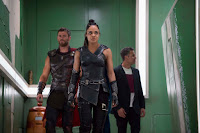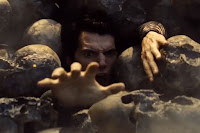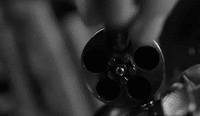…you don’t? Oh. Well, this makes things a little awkward, doesn’t it?
Look, we’ve all been waiting for this for a while. Revenge. The moment Yakko finally gets his comeuppance for what he did to me and my friends. Today’s the day he learns just how big a mistake that was. He crossed the wrong guy that day.
Plus, let’s be honest. Revenge stories can be loads of fun. John Wick. Arya Stark. The Wraith. Okay, probably not the Wraith, for a couple of the reasons I’m going to be talking about here. Thing is, a well done tale of revenge can check off a ton of storytelling boxes and almost everyone is up for it. Seriously. There’s something just so wonderfully cathartic about them.
 But… by the same token, a good revenge story is kind of a balancing act. Not too much of that, just enough of those, and that base has to be juuussssstperfect if it’s going to support this whole thing. If one of these things is off, my whole story can stumble pretty easily. More than one and… well, I’m probably going to faceplant. Hard.
But… by the same token, a good revenge story is kind of a balancing act. Not too much of that, just enough of those, and that base has to be juuussssstperfect if it’s going to support this whole thing. If one of these things is off, my whole story can stumble pretty easily. More than one and… well, I’m probably going to faceplant. Hard.
It struck me that I’ve seen a lot of stories make that faceplant. Sometimes in books, sometimes on screen. Sometimes, while poking around looking for Saturday geekery movies, I come across some things where it’s clear just from the description that they’ve hit the ground hard. So I figured it might be worth going over a few of those key elements to keep in mind. Y’know, before we go out to seek revenge on those who wronged us…
In this sense, a revenge story’s a lot like a redemption arc. I need my reader-empathy set to high so I have an honest sense of how this first, inciting act (ooooh, inciting act–doesn’t that sound all professional) is going to be viewed by my readers. Will they agree it’s something that requires vengeance?
 Second thing is whether or not my character is the person who should be getting revenge. To use an earlier example, if someone kills John Wick’s dog, we completely understand why he goes on his revenge spree. It’s an intensely personal loss for him… but it isn’t for the nice old woman he runs into on the beach sometimes who liked to pet the dog. She might be upset, even angry to hear the news, but it doesn’t make a lot of sense for her to go get revenge, does it?
Second thing is whether or not my character is the person who should be getting revenge. To use an earlier example, if someone kills John Wick’s dog, we completely understand why he goes on his revenge spree. It’s an intensely personal loss for him… but it isn’t for the nice old woman he runs into on the beach sometimes who liked to pet the dog. She might be upset, even angry to hear the news, but it doesn’t make a lot of sense for her to go get revenge, does it?
Revenge is a very personal thing. So the more removed and unconnected my protagonist gets from that actual act, the less it feels like revenge and the more it feels… well, it could be a bunch of things as we get farther away. Maybe Dot hired a hitman to get revenge, so he might be administering the beatdown or pulling the trigger, but for him it’s really just a job. And that police detective obsessed with the case? Well, for her it’s more about justice than vengeance. So revenge tends to stay tight and intimate. Personally, I think it needs to be a family thing, even if you want to take the broader sense of family (in that I can consider my best friends or my teammates “family”).
I feel that a big part of a revenge story is that it’s kind of symbiotic, from a storytelling point of view. It’s a relationship between the revenger and the revengee, so to speak, and one sided relationships are always just… well, weird. They need to go both ways. Yes, we want Phoebe to get her revenge, but we also want Yakko to know why she’s doing this. Why is she coming after him? Why is she doing these things? He needs to acknowledge this, one way or another—even if he just dismisses it (“…but I’d do it all again, lady, whoever you are!”).
And the reason for this is that we understand, on some level, that if Yakko doesn’t know why this is happening, then he’s just a victim. Not an innocent victim, no, but still just a victim. It’s the difference between my character seeing their empire torn apart and them knowing why it’s being torn apart.
That’s where it gets tricky. It’s really easy in a revenge story to go too far with the blood spilling and the property damage. And when I do, that’s when my protagonist stops being the hero and becomes a monster in their own right. Yes, we understand why John Wick wants revenge for his dog being killed. But if his response was to go visit the families of everyone involved and kill theirdogs right in front of their kids…? Well, I don’t think most of us would be rooting for him quite as much. Likewise, if Phoebe gets revenge on the guy who killed her husband by… oh sweet jeebus she dissolved him alive in a lye pit? Seriously? And the crane just lowered him a couple inches a day? It took eight and a half days for him to die? I mean, at this point it’s essentially a torture porn story where we’re being asked to root for the killer.
Next time… I think I want to talk about something we usually don’t talk about.
Until then… go write.












